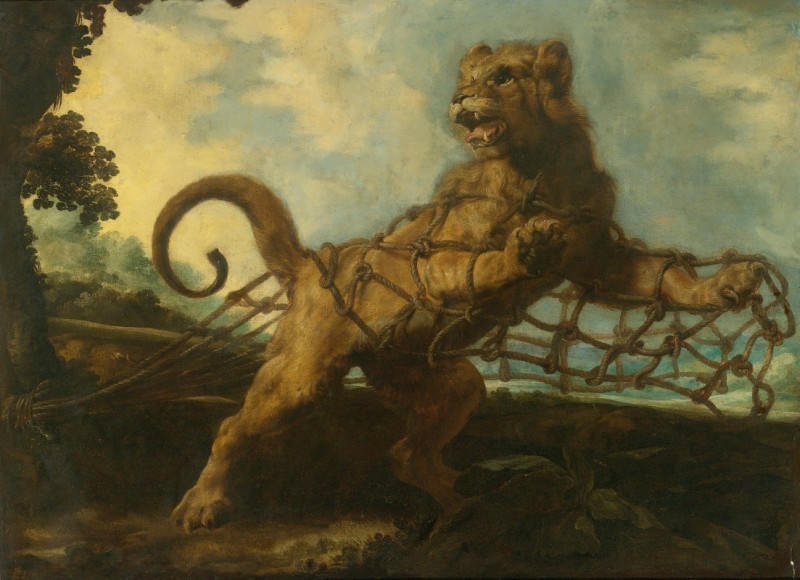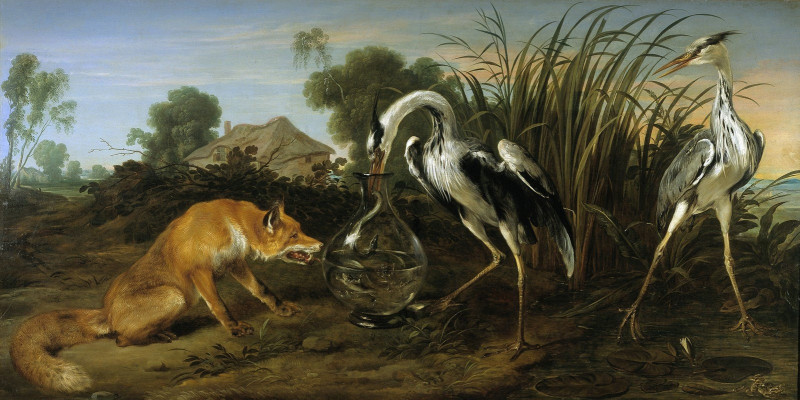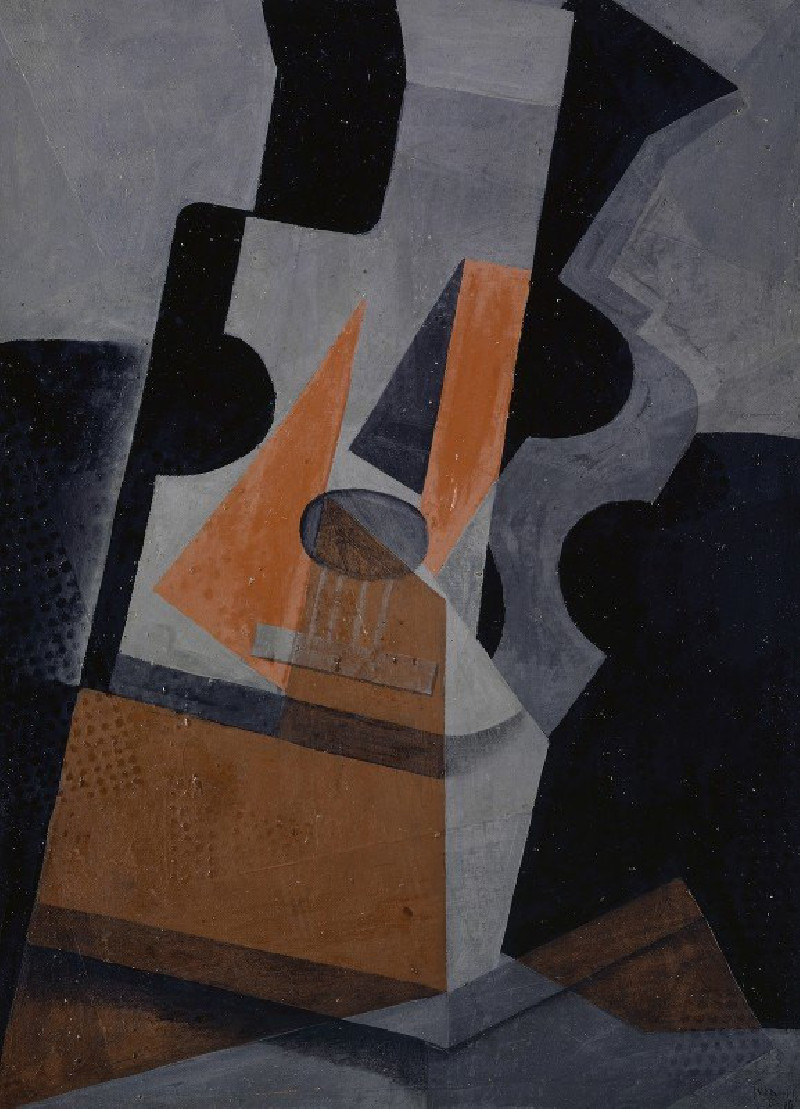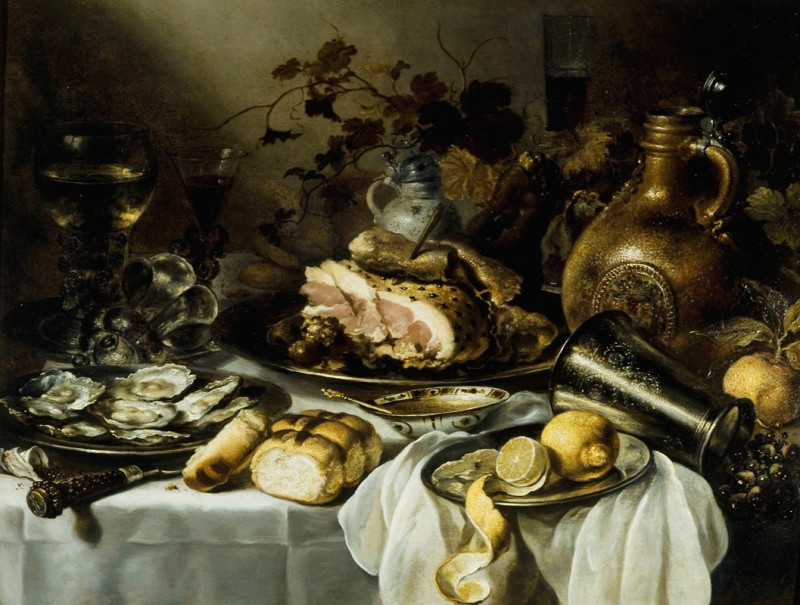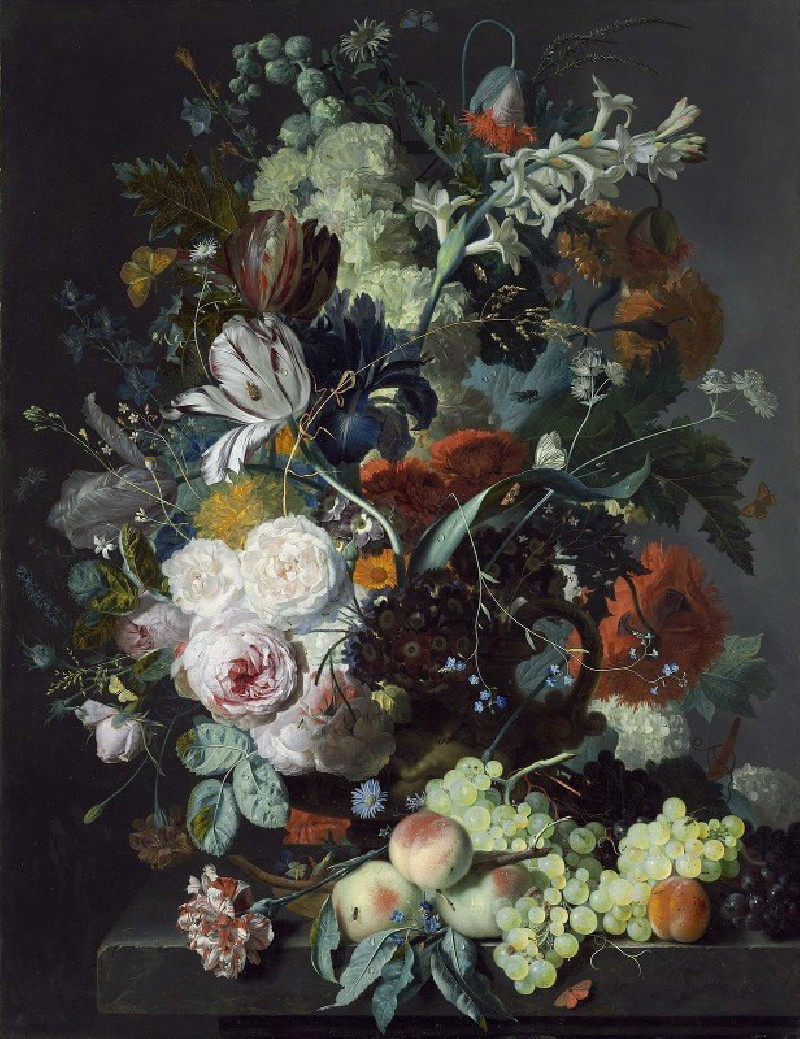Still Life with a Dead Stag (c. 1650)
Technique: Giclée quality print
Recommended by our customers
More about this artwork
Frans Snyders' striking work, "Still Life with a Dead Stag," epitomizes the lush and dynamic approach of Baroque still life painting. Created around 1650, this piece engages viewers with its vivid realism and intricate detail, encapsulating the opulence of the era's artistic expression.At the center of this remarkable painting, a dead stag hangs suspended, a demonstration of both the mastery of the hunt and the painter's skill in capturing the textures of fur and flesh. To the right, the head of a boar, mouth agape and teeth exposed, adds a raw, visceral edge that contrasts with the more refined elements of the composition.The left side of the canvas offers a cornucopia of fruits and vegetables, spilling out of a woven basket in a riot of colors. Grapes, apples, and berries are rendered with tactile detail, their surfaces dew-kissed and inviting. Accompanying these are a lobster and various other shellfish, their vibrant reds echoing the bloody hues of the hunted game and adding to the theme of abundance and decay.An interesting addition is the depiction of small creatures—a parrot and a monkey—each caught in a moment of reaction, lending a sense of life and movement that counteracts the stillness of the lifeless stag and boar.Frans Snyders, known for his masterful still lifes and animal scenes, uses this work to explore themes of life, death, and the fleeting nature of earthly pleasures. The juxtaposition of opulence and mortality invites reflection on the abundance before us and the inevitable passage of time.
Delivery
Returns
Frans Snyders or Frans Snijders (11 November 1579, Antwerp – 19 August 1657, Antwerp) was a Flemish painter of animals, hunting scenes, market scenes, and still lifes. He was one of the earliest specialist animaliers and he is credited with initiating a wide variety of new still-life and animal subjects in Antwerp. He was a regular collaborator with leading Antwerp painters such as Peter Paul Rubens, Anthony van Dyck, and Jacob Jordaens.









